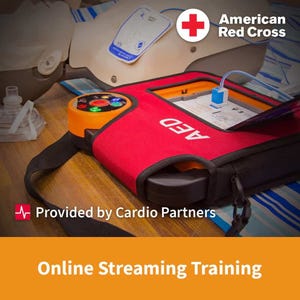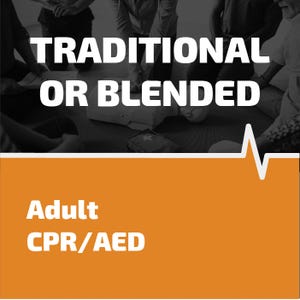Which CPR Course Should I Take?
- Feb 1, 2023

American Heart Month is the perfect time to educate yourself on what you can do when a cardiac emergency arises in your community or home. Cardiopulmonary Resuscitation, a part of first aid training / basic life support training and commonly known as CPR, is a life-saving technique that is performed when the heart stops beating. When accomplished properly, CPR can double or triple the chances of survival when a victim is suffering from cardiac arrest.1 Learning basic CPR skills not only provides the knowledge and confidence needed for individuals to stay calm in case of a medical emergency, but it allows individuals to make a difference in their community by being ready to jump in to help in the event cardiac arrest occurs.
Whether your job or medical program requires a certification, or you simply want to learn how to respond in the event of an emergency, it’s helpful to understand the many CPR and AED courses available. Let us help break down each option and highlight the features of each course type!
Online CPR Knowledge Courses
Online CPR training courses are great for individuals who are not required to have CPR training but want to be more prepared and comfortable responding during an emergency. This may be appropriate for high school and college students, trade workers, landscapers, motorcyclists, active individuals, individuals that have elderly parents living in the same home, and employees that don’t require OSHA-approved CPR. In these completely online courses, you will have the opportunity to use an interactive format that teaches how to identify breathing and cardiac emergencies.
Upon passing, you will have successfully completed the course. However, online CPR courses do not have the ability to demonstrate skill proficiency to certified instructors, making these courses unable to fulfill OSHA and BLS requirements.
Key Takeaways:
- Online only
- Digital certificate from the American Red Cross
- Does NOT meet OSHA or BLS requirements
- Great for non-medical workers and individuals interested in being emergency prepared
Virtual CPR Certification Classes
Virtual courses are a great option for those working in the healthcare field who are required to have CPR training and want to give their community a safer environment by being prepared to jump into action if an emergency arises. Virtual courses use the same interactive format as online courses do, however virtual are typically longer in length. They also require a “virtual meeting” with a CPR instructor who can evaluate your CPR performance giving these types of courses more credibility and making them accredited to meet BLS, OSHA, and workplace requirements.
Virtual courses provide a unique online learning link for individuals whose profession requires accredited CPR classes, such as:
- Healthcare workers
- Dental offices
- Childcare workers
- Athletic trainers
- Coaches
- Lifeguards
- Factory/plant workers
Key Takeaways:
- Online/ “Virtual Classroom” setting only
- Digital CPR card from the American Red Cross
- Meets OSHA requirements
- BLS class options
- Great for busy individuals who need to renew required CPR/AED training as required by your profession
Traditional or Blended CPR Classes
The traditional or blended learning course offers two different options. Traditional is a fully in-person course, while blended uses a combination of working interactively online and in-person skill checks which allows it to be more self-paced and time effective. Both courses require a minimum of 8 students to attend, which makes this option great for an employee requirement course or team certifications like lifeguards, teaching staff, or medical students.
Key Takeaways:
- You choose the learning mode and training location:
- Option 1) Traditional – In-person course and skill check
- Option 2) Blended – online course work, in-person skill check
- Digital CPR card from the American Red Cross
- Meets OSHA requirements
- BLS class options
- Great for teams that want to get CPR/AED certified as a group
Taking a CPR class will only take a few hours out of your time, but the skills you learn are a lifetime length of knowledge that can make all the difference when you are needed to save a life. Have more questions on CPR classes or want to learn more? Visit our FAQ page or check out our CPR course options available.
References
- American Heart Association. (2023). What is CPR. cpr.heart.org. Retrieved January 13, 2023, from https://cpr.heart.org/en/resources/what-is-cpr







 CALL US:
CALL US: